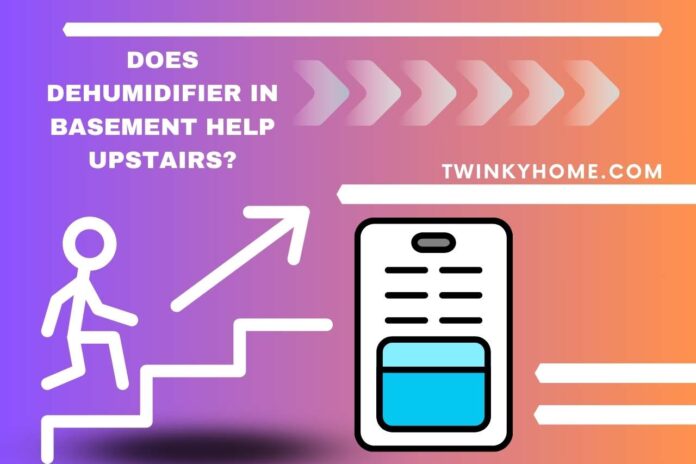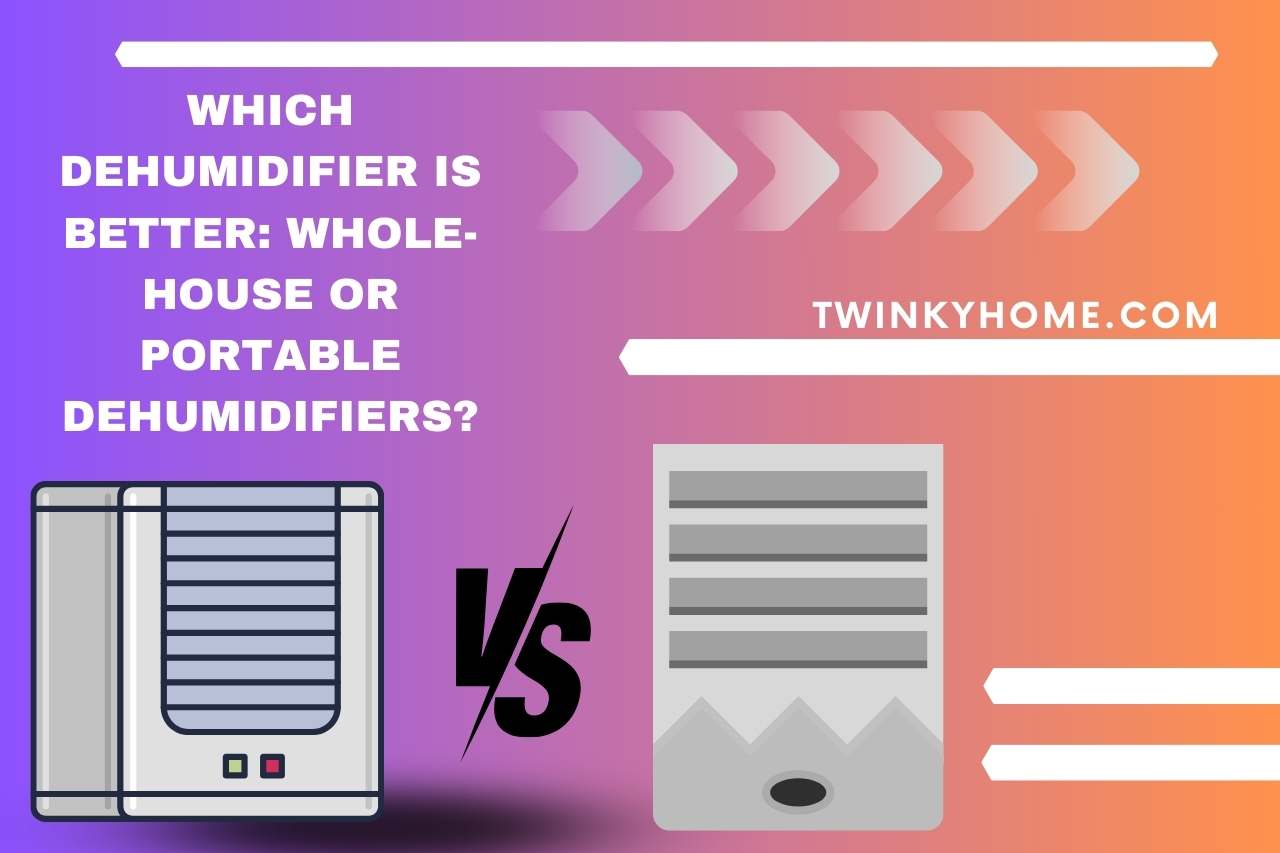Many homeowners wonder: ‘Does the dehumidifier in the basement help upstairs?’ Yes, it is doubtful if placing a dehumidifier in the basement effectively extends its benefits to the upper levels of the house since a portable basement dehumidifier is not as powerful as a whole-house dehumidifying unit. Unraveling the dynamics of humidity control within a multi-story home involves understanding the intricate interplay of air circulation, moisture migration, and the dehumidifier’s capacity. In this exploration, we will be discussing the factors influencing the reach of a basement dehumidifier and whether its impact can truly permeate throughout the entire house. From strategic placement to the nuances of home design, we help you to make informed decisions about maintaining a consistently dry and comfortable living environment.
How does a Dehumidifier Work?
A dehumidifier works by drawing in humid air through a fan and passing it over a set of coils. These coils are kept at a lower temperature than the incoming air, causing the moisture to condense into water droplets.
After that, the collected water drips into a reservoir or is directed to a drainage system. Meanwhile, the dehumidified air is reheated and released back into the room.
Accordingly, this process helps maintain optimal humidity levels, preventing issues like mold growth, musty odors, and damage to furniture or electronics.
In short, a dehumidifier acts as a moisture regulator, creating a more comfortable and healthier indoor environment.
Does Dehumidifier in Basement Help Upstairs?
No, dehumidifiers in basements cannot largely help to dehumidify upstairs.
While a dehumidifier in the basement can contribute to overall humidity control in the house, its effectiveness in dehumidifying the entire home is limited.
The reason why, basements are often isolated from the rest of the living spaces and air circulation between floors is not always efficient.
The chances of a basement dehumidifier directly impacting upstairs areas are less likely due to these spatial constraints.
However, the indirect benefits of basement dehumidifiers are noteworthy. By tackling moisture at its source in the basement, it prevents excessive humidity from infiltrating the upper levels.
This helps mitigate issues like mold, musty odors, and potential damage to belongings.
To ensure comprehensive dehumidification throughout the house, it would be better to use additional dehumidifiers strategically placed on the upper floors.
This combination approach provides a more holistic solution to maintaining optimal humidity levels across different levels of your home.
Now, let’s discuss the factors that influence the effectiveness of a basement dehumidifier in impacting upstairs areas:
- Air Circulation: Limited airflow between the basement and upper floors can impede the spread of dehumidified air.
- Size and Power: The capacity of the dehumidifier is another thing to consider. If it’s not powerful enough for the entire house, its impact may be confined to the basement.
- Sealing and Insulation: Well-sealed and insulated homes are more likely to benefit from basement dehumidification, as they reduce the infiltration of humid air from the basement to the upstairs.
- Home Layout: The architectural design plays a role when it comes to the effectiveness of dehumidifying. Open floor plans allow for better air movement compared to homes with segmented layouts.
- Humidity Sources: Identifying and addressing additional sources of humidity upstairs, like cooking or showering, impacts the overall effectiveness of basement dehumidification.
How to Use a Portable Dehumidifier to Dehumidify the Entire House?
To effectively use a portable dehumidifier to dehumidify the entire house, there are some tips and tricks, starting from strategic placement. Keep reading and collect enough knowledge to use your portable dehumidifier effectively.
- Strategic Placement: Position the portable dehumidifier centrally on the main floor for optimal airflow throughout the house.
- Capacity Matters: Do research and choose a unit with sufficient capacity for your home size to ensure it can effectively dehumidify larger spaces.
- Regular Maintenance: Empty the water reservoir regularly or set up continuous drainage to prevent interruptions in operation.
- Comprehensive Coverage: Consider placing additional dehumidifiers on different levels to ensure comprehensive dehumidification throughout the entire house.
- HVAC Integration: Maintain a balance with your HVAC system, ensuring proper ventilation and temperature control to enhance the dehumidifier’s efficiency.
- Seal Leaks: Seal any leaks or gaps in windows and doors to optimize the dehumidifier’s performance by minimizing external humidity infiltration.
- Timing and Programming: Make sure to run your dehumidifier during peak humidity periods with the help of features like programmable timers to manage energy consumption effectively.
- Address Specific Sources: Identify and address specific sources of humidity on each level for targeted and efficient dehumidification.
- Seasonal Use: Use the dehumidifier more intensively during warmer months when humidity levels tend to be higher.
Which Dehumidifier is Better: Whole-House or Portable Dehumidifiers?
Both whole-house and portable dehumidifiers have advantages and drawbacks. So, the best practice is to take all those positives and negatives into consideration when choosing a dehumidifier.
Whole-House Dehumidifiers:
Pros:
- Integrated System: Connected to the HVAC system, offering seamless integration with the home’s heating and cooling systems.
- Comprehensive Coverage: Designed to dehumidify the entire house, providing consistent humidity control across all rooms.
- Low Maintenance: Requires less manual intervention as it operates in conjunction with the HVAC system.
Cons:
- Installation Cost: In general, this is more expensive to install compared to portable units, involving professional installation.
- Initial Investment: Higher upfront costs can be a deterrent for some homeowners.
- Less Portable: Limited mobility as it is a fixed system, providing dehumidification only within the connected ductwork.
Portable Dehumidifiers:
Pros:
- Affordability: Generally, this is more budget-friendly with lower upfront costs.
- Flexibility: Can be moved and placed in specific rooms as needed, addressing localized humidity issues.
- Easy Installation: Requires minimal installation effort and can be set up by the homeowner.
Cons:
- Limited Coverage: Targets specific areas or rooms may not be as effective for whole-house dehumidification.
- Maintenance: Requires periodic manual maintenance, including emptying water reservoirs.
- Noise Level: Tends to produce more noticeable noise compared to integrated whole-house systems.
In conclusion, choosing between whole-house and portable dehumidifiers depends on individual needs and budget. Whole-house systems offer comprehensive coverage and low maintenance but come with higher upfront costs.
In contrast, portable units provide flexibility and cost-effectiveness but may require more manual intervention and cover limited spaces. Therefore, consider the size of your home, specific humidity concerns, and budget constraints to make the best decision.
You May Also Like
- How to Drain a Basement Dehumidifier? Step-by-Step Guide
- How Long for Dehumidifier to Dry Basement? Unveiling the Drying Magic!
- How to Clean Basement Dehumidifier? Crystal Clear Air!
- How to Keep the Basement Dry Without a Dehumidifier? (Tips & Tricks)
- Whole House Dehumidifier vs Basement Dehumidifier – Choosing Wisely!
- How to Choose the Right Dehumidifier for the Basement? Basement Bliss!
- Why does My Basement Dehumidifier Ice Up? Decoding Dehumidifier Woes!
- Can you Run Two Dehumidifiers in the Basement? (Ins and Outs)
- How Long Should a Basement Dehumidifier Last? Investing in Comfort!








![OGX Biotin And Collagen Shampoo Review [Updated One] Ogx Biotin And Collagen Shampoo Review](https://twinkyhome.com/wp-content/uploads/2022/03/Are-chicken-Super-Noodles-vegetarian-1-100x70.jpg)